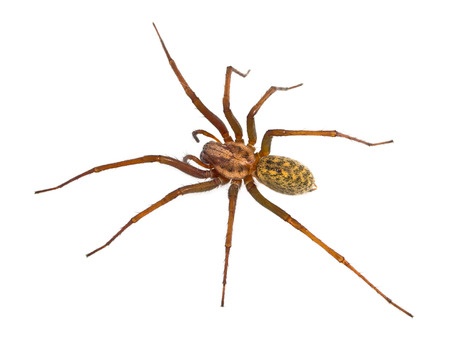Hawaiian Spiders Play the Same Evolutionary Tricks Every Time They Colonize a New Island
Evolution depends heavily on chance, meaning that it is quite unpredictable. However, a recent study revealed that one type of spider that lives in Hawaii appears to re-evolve into the same three forms every single time they colonize a new island. Scientists were stumped by the almost formulaic manner in which this spider always evolves into the exact same three forms no matter where it seems to colonize. Why would evolution repeat itself like this?
The spider in question is a member of the genus Ariamnes. They can be found on most of islands in the archipelago, living high in the forests. These spiders are nocturnal and nearly blind. The spider comes in three distinct, colorful forms, each form being an adaptation that helps best camouflage them depending on the specific aspects of their environment. One is dark in color and lives in rocks or bark. Another lives under leaves and has a shiny, reflective gold coloring. Finally, the third type is completely matte white in color and lives on lichen. Their different camouflaging helps to protect them from their primary predator, the Hawaiian honeycreeper.
Rosemary Gillespie, an evolutionary biologist at the University of California, Berkeley, US, is the lead researcher in this study. Gillespie and fellow researchers used a blend of software modeling and genetic analysis to come to discover that these spiders constantly re-evolve into these same three forms, called ecomorphs. According to Gillespie, this rare example of “repeated and predictable convergent evolution” is came about due the extreme isolation of the Hawaiian islands, which is the most isolated landmass in the entire world. This evolutionary déjà vu was caused by a unique set of circumstances such as the lack of diversity in predators, the limited set of genetics the spiders can be formed from because spiders in the same genus are their only matches, which could also have a preprogrammed DNA switch to ensure the evolution of the same three forms, as well as being stuck in an environment that encourages and only rewards particular types of camouflage and defense mechanisms. While they haven’t been able to answer all of the questions yet, Gillespie and her team hope to continue to study this type of predictable evolution in other species in order to find the answers we don’t have.
Why else do you think this type of predictable evolution would be an advantage for certain species? Do you know of any other animals that demonstrate this evolutionary pattern or a similar one?
Tags: Spiders




